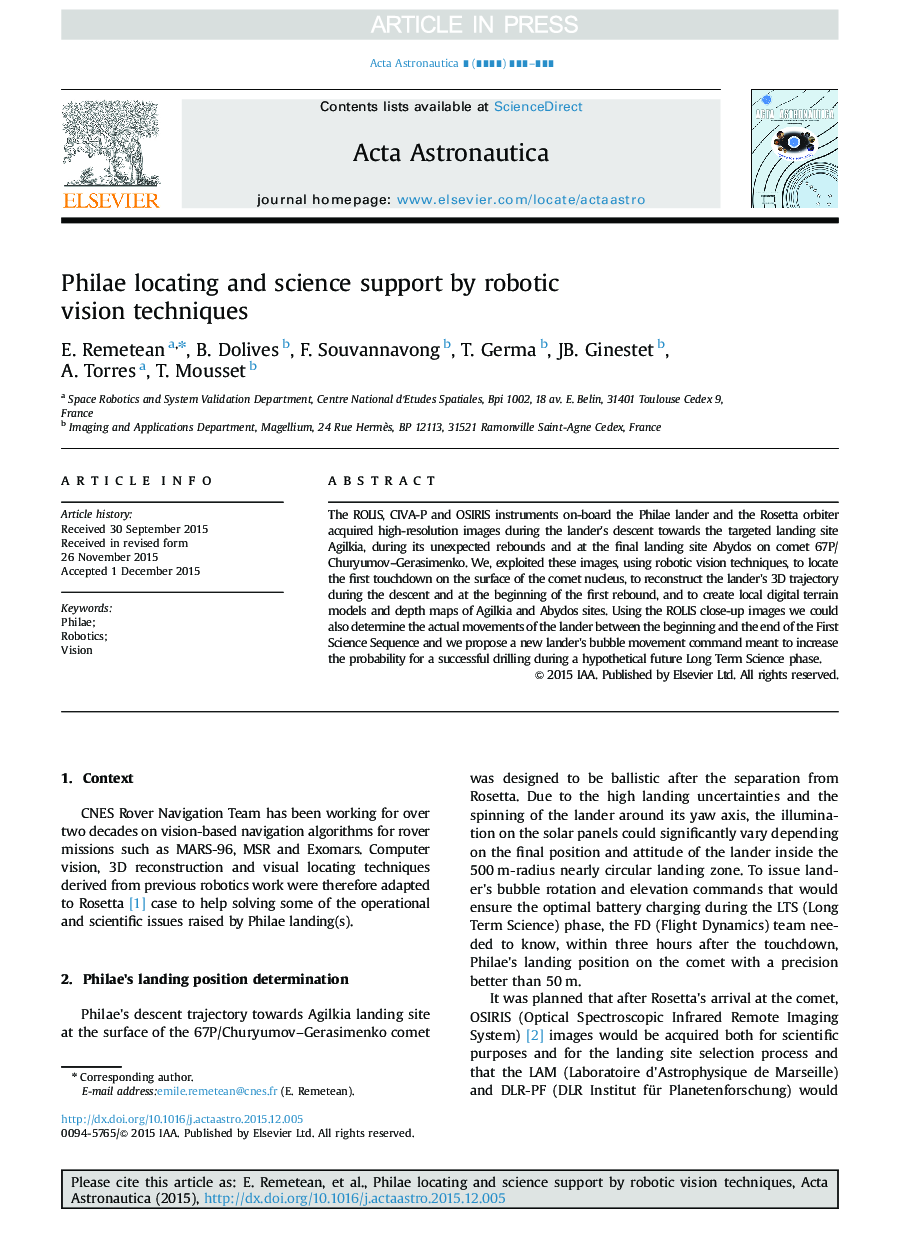| Article ID | Journal | Published Year | Pages | File Type |
|---|---|---|---|---|
| 8056220 | Acta Astronautica | 2016 | 13 Pages |
Abstract
The ROLIS, CIVA-P and OSIRIS instruments on-board the Philae lander and the Rosetta orbiter acquired high-resolution images during the lander׳s descent towards the targeted landing site Agilkia, during its unexpected rebounds and at the final landing site Abydos on comet 67P/Churyumov-Gerasimenko. We, exploited these images, using robotic vision techniques, to locate the first touchdown on the surface of the comet nucleus, to reconstruct the lander׳s 3D trajectory during the descent and at the beginning of the first rebound, and to create local digital terrain models and depth maps of Agilkia and Abydos sites. Using the ROLIS close-up images we could also determine the actual movements of the lander between the beginning and the end of the First Science Sequence and we propose a new lander׳s bubble movement command meant to increase the probability for a successful drilling during a hypothetical future Long Term Science phase.
Related Topics
Physical Sciences and Engineering
Engineering
Aerospace Engineering
Authors
E. Remetean, B. Dolives, F. Souvannavong, T. Germa, JB. Ginestet, A. Torres, T. Mousset,
